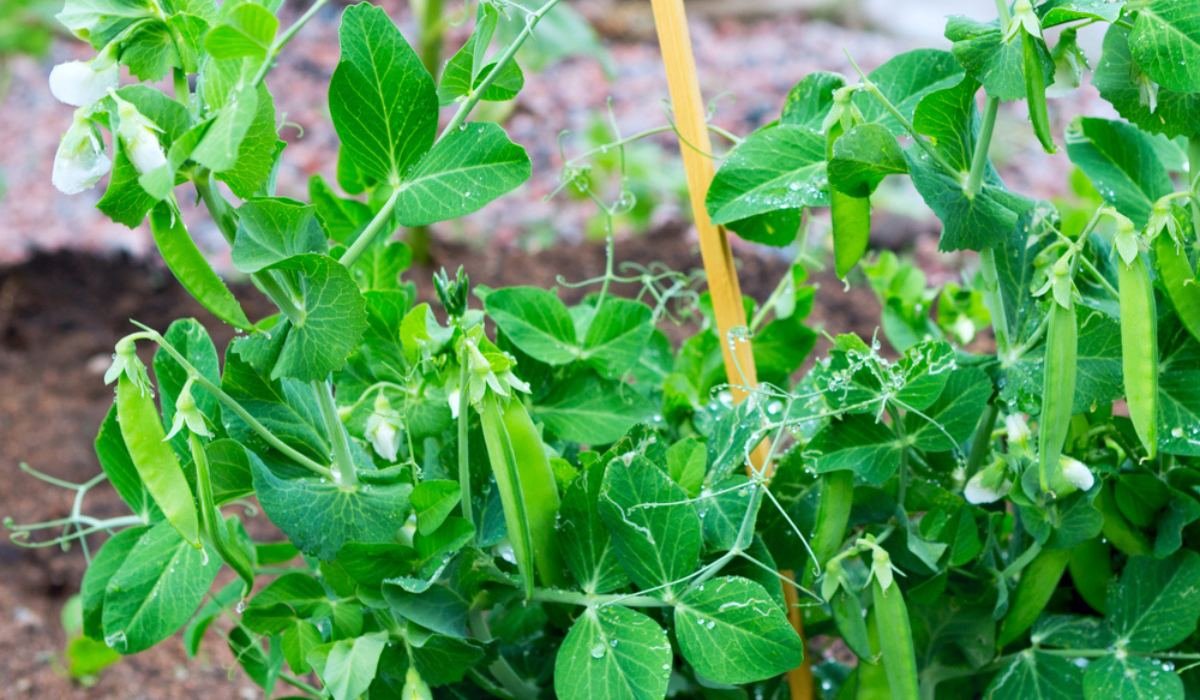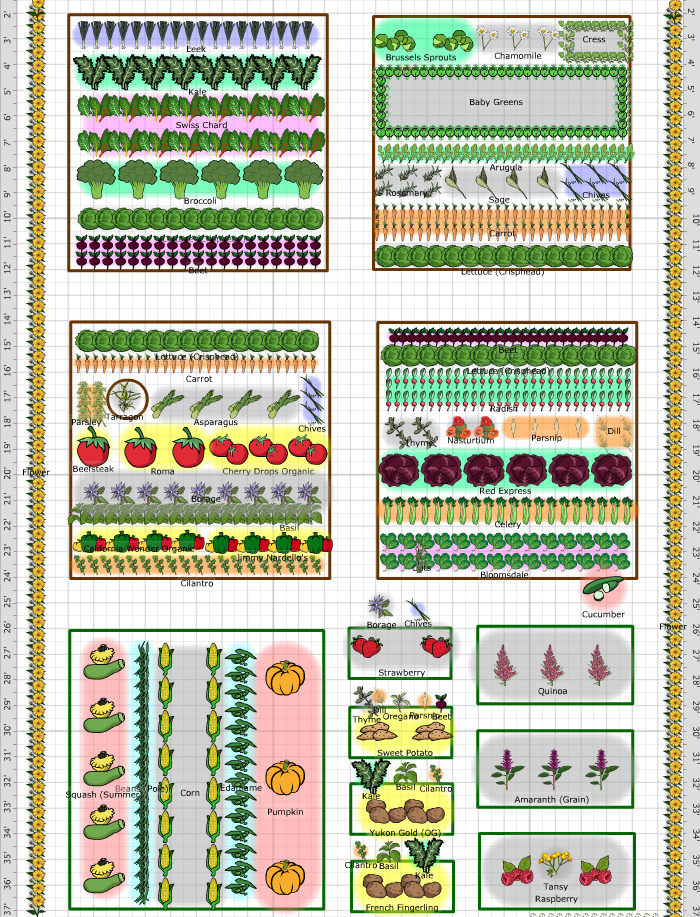The Farmers' Almanac Companion Planting Chart: The Ultimate Guide To Growing A Healthy And Productive Garden
Introduction
Companion planting is a gardening technique that involves planting certain plants together to benefit each other. By understanding which plants are compatible, you can create a more productive and pest-resistant garden.
The Farmers' Almanac Companion Planting Chart is a comprehensive resource that lists which plants are good companions and which ones should be avoided. The chart is based on years of research and experience, and it can help you to create a garden that is both beautiful and productive.
In this blog post, we will discuss the benefits of companion planting, how to use the Farmers' Almanac Companion Planting Chart, and some of the most popular companion plants. We will also provide some tips for creating a successful companion planting garden.
Benefits of Companion Planting
There are many benefits to companion planting. Some of the most notable benefits include:
- Increased crop yields: Companion planting can help to increase crop yields by attracting beneficial insects, deterring pests, and improving soil health.
- Improved plant health: Companion planting can help to improve plant health by providing shade, windbreaks, and nutrients.
- Reduced pest problems: Companion planting can help to reduce pest problems by attracting beneficial insects, deterring pests, and breaking the pest lifecycle.
- Enhanced pollination: Companion planting can help to enhance pollination by attracting pollinators such as bees and butterflies.
- Beautiful gardens: Companion planting can also help to create beautiful gardens by adding variety and interest to your plantings.
How to Use the Farmers' Almanac Companion Planting Chart
The Farmers' Almanac Companion Planting Chart is a simple and easy-to-use resource. The chart lists a variety of vegetables, herbs, and flowers, along with their compatible and incompatible companions.
To use the chart, simply find the vegetable, herb, or flower that you want to plant. The chart will then list the plants that are good companions for that plant, as well as the plants that should be avoided.
For example, if you are planning to plant tomatoes, the chart will tell you that basil, carrots, and marigolds are good companions for tomatoes, while potatoes and eggplants should be avoided.
Popular Companion Plants
Here are some of the most popular companion plants:
- Basil: Basil is a great companion plant for many vegetables, including tomatoes, peppers, and cucumbers. It helps to repel pests and attract beneficial insects.
- Carrots: Carrots are good companions for onions, beans, and peas. They help to improve the flavor of carrots and deter pests.

- Marigolds: Marigolds are a great companion plant for many vegetables, including tomatoes, cucumbers, and squash. They help to repel pests and attract beneficial insects.

- Onions: Onions are good companions for beans, carrots, and tomatoes. They help to repel pests and improve the flavor of vegetables.

- Peas: Peas are good companions for beans, carrots, and lettuce. They help to improve the nitrogen content of the soil and deter pests.

- Spinach: Spinach is a good companion plant for carrots, onions, and tomatoes. It helps to improve the flavor of vegetables and deter pests.
Tips for Creating a Successful Companion Planting Garden
Here are some tips for creating a successful companion planting garden:
- Do your research: Before you start planting, do some research to learn about which plants are compatible. The Farmers' Almanac Companion Planting Chart is a great resource for this information.
- Plan your garden carefully: When you are planning your garden, take into account the needs of the different plants that you will be growing. Some plants need full sun, while others prefer partial shade. Some plants need a lot of water, while others are more drought-tolerant.
- Experiment: Don't be afraid to experiment with different companion planting combinations. You may be surprised at what works well together.
- Have fun! Companion planting can be a fun and rewarding way to grow a healthy and productive garden.
Conclusion
Companion planting is a simple and effective way to improve the health and productivity of your garden. By using the Farmers' Almanac Companion Planting Chart and following these tips, you can create a beautiful and productive garden that is both beneficial to you and to the environment.
Do you want to grow a healthy and productive garden? If so, you should consider using companion planting. Companion planting is a gardening technique that involves planting certain types of plants together to benefit each other. For example, some plants attract beneficial insects, while others deter pests. Some plants also help to improve the soil quality, while others help to shade plants that need less sunlight.
The Farmers' Almanac Companion Planting Chart is a great resource for learning more about which plants grow well together. The chart lists different types of plants and their companion plants, as well as any plants that should not be planted together. The chart is easy to use and can help you to create a garden that is both beautiful and productive.
To learn more about the Farmers' Almanac Companion Planting Chart, please visit Gardenia Inspiration.
FAQ of farmers almanac companion planting chart
1. What is companion planting?
Companion planting is a gardening technique that involves planting certain types of plants together to benefit each other. Some plants can help to repel pests, attract beneficial insects, or improve the flavor of other plants.
2. What are the benefits of companion planting?
There are many benefits to companion planting, including:
- Reduced pest problems
- Increased pollination
- Improved flavor
- Increased yields
- Enhanced biodiversity
3. How do I use the Farmers' Almanac companion planting chart?
The Farmers' Almanac companion planting chart is a great resource for gardeners who want to try companion planting. The chart lists which vegetables and flowers are good companions, as well as which plants should be avoided planting together.
To use the chart, simply find the vegetable or flower that you are planning to plant. The chart will then list the plants that are good companions for that plant, as well as any plants that should be avoided.
4. How close should I plant companion plants?
The distance at which you plant companion plants depends on the specific plants involved. However, in general, plants that have a beneficial relationship (friends) should be planted within two or three rows of each other.
5. Where can I find more information about companion planting?
There are many resources available to learn more about companion planting. Here are a few suggestions:
- The Farmers' Almanac companion planting chart
- The Old Farmer's Almanac companion planting guide
- The Portland Nursery companion planting guide
- The Hyams Garden Center companion planting guide
Image of farmers almanac companion planting chart
Here are 5 different images of "farmers almanac companion planting chart" from pinterest.com:
This chart shows which vegetables are beneficial to plant together, which ones should be avoided planting together, and which ones are neutral.
This chart is a classic companion planting chart that has been used by gardeners for many years. It shows which vegetables attract beneficial insects, which ones repel pests, and which ones improve the flavor of each other.
This chart is a more detailed companion planting chart that shows which vegetables can be planted together in the same bed, which ones should be planted in separate beds, and which ones should be avoided planting together altogether.
This chart shows which herbs are beneficial to plant together, which ones should be avoided planting together, and which ones are neutral.
This chart shows which flowers are beneficial to plant together, which ones should be avoided planting together, and which ones are neutral.





Post a Comment for "The Farmers' Almanac Companion Planting Chart: The Ultimate Guide To Growing A Healthy And Productive Garden"